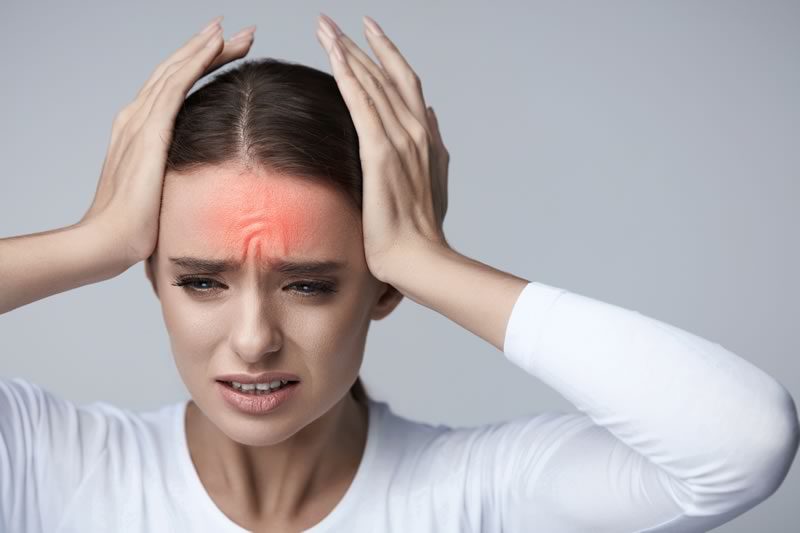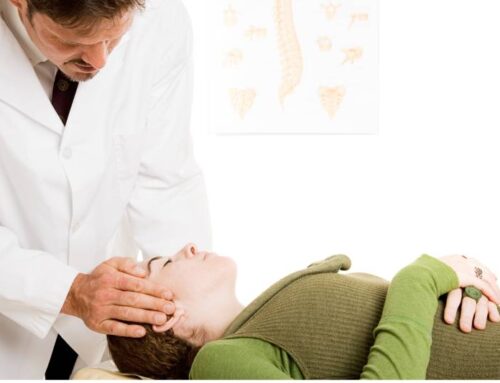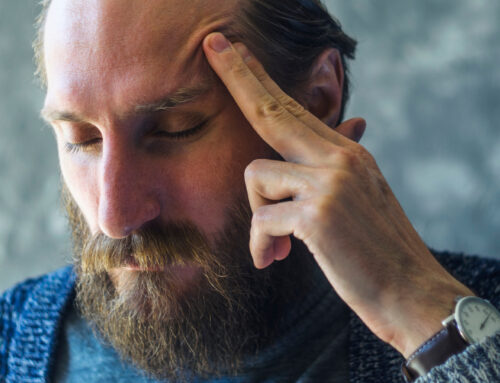Are you constantly wondering, “Why do I have these constant headaches?” You’re likely dealing with a chronic headache. You don’t have to suffer in silence anymore. We have a step by step treatment for constant headaches to help you ease your headache.
What are Chronic Daily Headaches?
A chronic headache is defined as a headache that occurs at least 15 days or more per month for three months or longer. Unlike occasional headaches, these persistent headaches can interfere with daily life and often require specialized treatment.
Chronic headaches can be primary (with no underlying cause) or secondary (caused by another condition). The type of primary headache you’re experiencing can help determine the best treatment plan for long-term relief.
What Are the Different Types of Chronic Headaches?
There are several types of chronic headaches, including:
- Chronic Migraine – A frequent, severe headache often accompanied by symptoms like loss of vision, nausea, and sensitivity to light and sound.
- Chronic Tension-Type Headache – A dull, constant headache that may feel like a tight band around the head.
- New Daily Persistent Headache (NDPH) – A sudden-onset headache that occurs daily and doesn’t improve over time.
- Hemicrania Continua – A rare, one-sided stabbing headache that responds well to specific medications.
- Chronic Cluster Headache – A severe headache that occurs in cyclical patterns, often with pain on one side of the head.
Most Common Causes Of Chronic Pain
Various factors contribute to chronic headaches. See below for some of the most common reasons for constant headaches:
TMJ – Temporomandibular joint disorder, or TMJD, causes jaw pain and recurring tension headaches, along with other uncomfortable TMJ symptoms.
Posture – When your body is hunched over, your jaw can become tightened and clenched. This clenching causes the muscles of the face to tighten. When pressure is placed on your neck, your chin extends forward or down. This pressure can irritate the tissues of your neck leading to headaches. Maintaining a healthy posture can help reduce pressure on the joints of your neck and therefore reduce headaches.
Neck Pain – Pain and tension in the neck muscles may cause compression of a nerve that exits the base of the skull. This eventually can trigger pain that wraps over the head and above the eyes. Your neck joints can cause a neck headache or pain if they are too stiff. Neck pain from headaches can also be caused when your neck is locked in an abnormal joint position eg. locked facet joint or poor posture.
Stress / tension – Stress and tension can be a cause for headaches. A stressful lifestyle that is demanding on your mind is often demanding on your health too. Tension headaches can cause mild, moderate, or intense pain in your head, neck, and behind your eyes. These are episodic episodes that last once or twice a month.
Other Causes – Inflammation, brain injury and infection can also be causes of chronic headaches. Conditions that might cause nonprimary chronic daily headaches can include inflammation or other problems with the blood vessels in and around the brain. In extreme cases this can include stroke. Other cases include conditions such as meningitis or Intracranial pressure that’s either too high or too low.
How to Recognize the Symptoms of Chronic Headaches
The symptoms like nausea, dizziness, and sensitivity to light can indicate a specific headache disorder. Other signs include:
- Throbbing pain or pressure in the head
- Pain behind the eyes or temples
- Neck and shoulder tension
- Increased severity with physical activity
Tracking your headache symptoms can help determine the type of headache you’re experiencing and guide your treatment plan.
Treatment For Chronic Headaches
Medication
Drugs are the most effective, yet temporary solution for chronic headaches. There are both prescription and over-the-counter painkillers, as well as migraine-specific drugs such as triptans. These are known as abortive or acute medications.
Sometimes, medications can cause headaches.
Withdrawal of the overused medication is the first step in treating individuals with medication overuse headaches. Medication overuse must be managed prior to instituting other pharmaceutical treatments for medication overuse headaches.
Non-surgery / Non-drug option – iTrac Therapy
iTRAC is a non-surgery, non-drug, natural option to treat headaches when you first want a natural, non-drug, non-surgery option. This involves a unique device meant to restore the normal positioning of your neck and head. With iTRAC®, the focus is on the primary reason for your headaches. It’s an alternative to medication pain relief and is safe to use on everyone with headaches due to TMJ, bad posture, problematic disks, stress or tension, and neck pain.
The Head and Neck Centers of Excellence For Treatment of Constant Headaches
Dr. Andrew Smith from The Head and Neck Centers of Excellence has dedicated his career to resolving head and neck pain. After years of research and perfecting his treatment, Dr. Smith developed the A.S. Remodeling Protocol® for chronic severe headache, TMJD, and neck pain sufferers. For more information on treating your chronic headache, contact us today!






